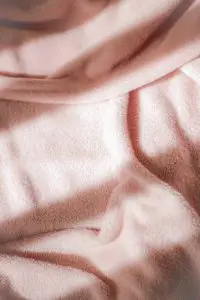There are varying times when you find yourself attracted to the crisscross of tartan. Maybe because you have Scotland heritage or you love to watch outlander. However, two fabrics continuously confused for one another are plaid and tartan. They both come with woven designs which feature two or more colours crossing each other. While the name ‘plaid’ refers to the crisscrossing design, tartan is more about the plaid pattern that belongs to Scotland. Whatever confusion you have, we hope to clear it up in this Tartan vs plaid article.
In this article, we’ll explore the main features of tartan and plaid. You’ll also learn the main difference between tartan and plaid and some of the similarities. On that note, let’s begin.
Tartan vs Plaid – What is Plaid Fabric?
The word plaid is usually a description of a woven design with vertical and horizontal threads crossing each other. Plaid covers different types of crisscrossing woven patterns for different kinds of clothes. There are times when you’ll see plaid designs in cotton, flannel, or wool.
The first record of plaid was in Scottish history, and it was used as an alternative name for a blanket. However, archaeologists report finding a fabric that features the plaid design as far back as the dark ages. People first spotted the crisscross pattern associated with plaid in the Scottish highlands. Down the line, a wave of Scottish immigration brought this fabric to America, where it quickly grew in popularity.
In the early 19th century, a company came up with an intelligent marketing scheme that gave plaid a unique American twist. The company utilized a picture of Paul Bunya wearing a plaid shirt, making it even more appealing to the public. The title plaid covers a vast collection of tartan, checked, and crisscrossing designs like buffalo plaid.
When it comes to culture, plaid is a unique symbol of resistance and counter-cultural style. By using tartan in the highland, plaid also became one of the principal elements of the punk wardrobe. It was pretty common to see boys wear loose and unbuttoned plaid shirts. Doing this allowed them to become a significant part of the hub.
Tartan vs Plaid – What is Tartan Fabric?
In this tartan vs plaid comparison, it’s crucial to understand what tartan fabric is. It is a plaid design whose name and history are associated with a Scottish family. You can often find the unique designs registered in online databases and historical archives as clan tartans. One common trend in America is that tartan and plaid are used interchangeably. In Scotland, while plaid first meant a piece of clothing, tartan meant the woven design.
There’s a strong possibility that the famous Scottish kilt originated from the use of tartan blankets. You could use the blanket over your shoulder. Therefore, Scottish people started calling it plaids. There are multiple meanings for plaids in Scotland. On the other hand, a tartan design is called plaid in America. One of the things that caused a resurgence of the plaid pattern in recent years was the farmhouse style. Another widespread use of the plaid design was the plaid pyjamas.
Tartan vs Plaid – History of Tartan and Plaid
Most clans had a special weaver in the Scottish Highlands that created fabrics for the community. As time passed, the weavers explored their creativity and designed unique plaid patterns for men in their community to wear. These plaid designs served as an identifier for the community and were a team uniform.
In the beginning, the weavers used natural dyes to create their colors. This method allows the weavers to create complex sets. The repeating crisscross patterns were the main distinction between different tartan designs. There’s a possibility that the word ‘tartan’ originated from the word ‘tartaine,’ which translates to checked cloth.
A historical event tied with the Scottish tartan is their fight for independence. Throughout history, Scotland continually fought to become an independent nation. The Scotsmen who went into battle would wear their clan tartans as a form of identifier during the wars. The end of Bonnie Prince Charlie’s Jacobite uprising after the battle of Culloden brought an end to the popularity of clan tartans. England banned the wearing of these tartans as part of the Disarming Act, suppressing centuries of history and culture.
Despite the tragedy associated with these clan tartans, it was clear that the tartan design was quite symbolic. It was a symbol of their culture, and the ban held for over three decades before they successfully repealed it in 1782. However, by this time, most Scottish families had already immigrated to America, looking for the chance of freedom they lost at home.
Does Every Scottish Family have a Tartan?
Although most people believe that every original Scottish family has a historic tartan design, that’s not always true. In such cases, people with Scottish ancestry would wear the tartan attached to their mother’s maiden name. Today, sports teams, Scottish districts, and businesses can easily register a tartan design that would represent them. People could then choose to wear the tartan to show support for their favorite brands and sports teams. Records show that over 25,000 tartans have been registered. So if you have a Scottish lineage, there are chances that you’ll find one that’s significant to your family.
Tartan vs Plaid: The Difference
The main difference between these two fabrics lies in their association. While Plaid refers to woven designs that feature crisscrossing vertical and horizontal lines, tartan refers to unique patterns that are associated with an organization or a specific clan. Therefore, it is common to find the phrase ‘tartan plaid’ because most tartans are technically a form of plaid.
In the 16th century, the best way most men identified as a part of a clan was by wearing a highland dress with tartan colors. It was the best way of representing the highland culture. Today you can find the tartan plaid used in different clothing like a sporran, kilt, jackets, etc. However, most people only wear it for fancy occasions and cultural events.
To put it simply, the notable difference between plaid and tartan is the cultural difference. Although the typical plaid design looks excellent, it doesn’t necessarily mean anything. On the other hand, tartan always has a historical or cultural meaning.
Tartan Plaid Names and Colors
When you find a tartan with a name, chances are it got its name from the clan or the family member who first wore the design. Colors are identifiers for clans, but there are times when it also features more meaning. An example is a red and green pattern. This colorful pattern is associated with the catholic religion, while the blue designs represented the protestant religion at various times in history. Below is a detailed breakdown of how you can identify tartan plaid according to its names and colors.
Tartans by Surname
In Scotland, your surname determines the clan that you belong to. However, this association to surname becomes complex when smaller clans show their allegiance to more powerful clans. This usually means that surnames tend to change over time. Also, since every clan features a unique tartan design, there are chances that your surname could also be the name of your tartan plaid. An example in this tartan vs plaid is Clan Fraser. This clan has many varying tartans carrying their name, like the Frazer of Lovat, Fraser Red, and even Fraser Hunting.
Most families wore woven clothes for centuries. However, the popularity of tartans exploded among the British and Scottish after the visit of George IV to Scotland in the 1800s. Before this time, no English Monarch took time to visit Scotland, and his experience with the tartan led to the Georgian craze. This event inspired Queen Victoria to visit Scotland and get a unique design for the royal family. She bought the Balmoral caste and used this tartan design to decorate. This design featured varying patterns like the Hunting Stewart and Dress Stewart.
If you have Scottish ancestry, you can find out if you have a tartan pattern by using an online database to search. However, you might not find the tartan pattern because of the surname spelling. Most surname spellings tend to change with time, so it’s always advisable to conduct genealogical research before going online.
Some organisations designed a modern registration for clan tartans to make finding your surname’s tartan plaid much easier. The most official registry you can utilize right now is finding your clan tartan is the Scottish Register of Tartans.
Tartan Plaids by Colors
Like the names, colors also have cultural designs, and you can tell the colors of each family tartan when you look through their carefully curated records. When you dive into the tartan records, you’ll discover that they used muted colors, modern colors, and ancient colors. In addition, there were unique terms used in describing the type of dye the weavers used in creating the tartan design.
Most modern colors utilize chemical, bright, or synthetic dyes. This method helped create vibrant colors of green, red, and blues, which are standard colors used in the design of kilts. On the other hand, ancient colors represented the natural dyes the original highland weavers utilized in their designs. While they produced the same colors, it was paler and less vibrant than modern colors.
Until the late 20th century, muted colors began to emerge. People were interested in recreating the original color of the tartan plaid. Therefore, muted colors were more of a modern attempt to achieve the ancient colors associated with the design.
Tartan vs Plaid – Who is Allowed to Wear a Clan Tartan?
Most times, tartan patterns belong to specific groups of people like the British Royal family. However, there are many tartan plaids available that anyone can wear, even those without Scottish ancestry. In addition, there are unique tartan designs that weavers created for general wear. By using them, you’re celebrating Scottish heritage without a need to feel guilty.
There are several tartan patterns today that initially had a unique representation but are not universal. For example, the Black Watch tartan belonged to the Scotsmen military unity employed to police Scotland by the British. However, you can find this black and green tartan plaid in various clothing for use by the general public. Despite the popularity of the tartan, there’s a need to avoid cultural appropriation. Therefore, it’s best only to wear them to special events if you don’t have Scottish origins.
A Great Online Class: Color Theory for Textile Projects by Domestika
If you are interested in learning more about how you can create a successful name for your business, we recommend taking a look at the online class “Color Theory for Textile Projects”.
The course is currently under promotion, but you can use the discount code: T_BROWNLEES-PROMO to get an additional 10% discount on your purchase.
This online class offered by Domestika, at a very inexpensive price covers all you need to know to develop your textile project by leveraging color theory to create the perfect color palette. If you apply to the course through the link below you’ll be supporting 440 Industries, and we thank you for it!
Final Thoughts
There are different designs of plaid patterns available, and tartan is one of them. The main difference to note in this tartan vs plaid comparison is that tartan is more of a unique design and always features a cultural significance. On the other hand, plaid refers to woven patterns with lines intersecting vertically and horizontally.
You can easily find a plaid shirt with tartan designs or buffalo checks. Plaid designs come from various parts of the world, including India and Scotland. However, you can now use them in multiple types of clothing like pajamas, kilts, and even summer shorts.







